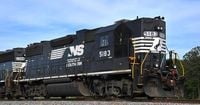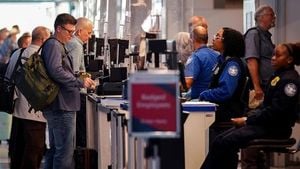Union Pacific and Norfolk Southern, two of North America’s major freight railroads, have entered early-stage talks to merge, potentially creating the largest rail network in the United States. This proposed merger would connect the East and West coasts, spanning much of the country and reshaping the landscape of the freight rail industry.
The discussions, which began earlier in 2025, aim to combine the largest and the smallest of the country's six Class 1 freight railroads. Union Pacific, with its extensive rail lines across the Midwest and West, and Norfolk Southern, whose network covers much of the Eastern U.S., would together create a transcontinental rail system that could revolutionize the way goods move across the nation.
According to the railway transport news portal Railway Supply, the merger talks were publicly confirmed on July 19, 2025. Daniel Moore, a senior analyst at Baird, highlighted that Union Pacific CEO Jim Vena has long supported the idea of a transcontinental railroad system. Moore told investors that such a merger could unlock significant long-term value by blending precision scheduled railroading with network synergies, leading to greater operational efficiencies.
However, the path to completing this merger is fraught with challenges. Regulatory approval will be a major hurdle, with the Surface Transportation Board and the U.S. Department of Justice expected to conduct thorough reviews that could take over two years. The merger would face scrutiny not only from regulators but also from investors, labor unions, and other stakeholders such as Amtrak.
Emily Nasseff Mitsch, a research analyst at CFRA, cautioned that any deal would encounter serious regulatory review. She noted, "We note that any deal would face serious review from regulators, such as the U.S. Department of Justice, as well as investors, Amtrak, and labor unions." This underscores the complexity and sensitivity surrounding the consolidation of such significant railroad assets.
Industry insiders also anticipate opposition from competitors. BNSF Railway, another major player in the freight rail market, is expected to contest the merger, fearing that it would reduce competition in the industry. Experts predict that if the deal proceeds, it could trigger a wave of further consolidations, reinforcing a first-mover advantage for Union Pacific and Norfolk Southern.
Beyond regulatory and competitive concerns, the merger raises broader questions about the future of the rail industry in America. Ron Kaminkow, a recently retired engineer and trustee for the Railroad Workers Union, expressed apprehension about further consolidation. He reflected on the sharp decline in the number of Class 1 rail carriers, noting, "There were 40 Class 1 carriers in 1980 when I entered the job market. We’re down to 6. And if they have their way, we’re down to 4." Kaminkow worries that these "megamergers" risk concentrating too much control over the nation’s economy in the hands of a few companies, which could adversely affect shippers and consumers alike.
Still, Kaminkow acknowledged the potential efficiency gains from a transcontinental railroad. He explained that it could reduce the difficulties involved in handing off cargo at gateway terminals where different railroad companies’ territories meet. Yet, he advocates for publicly owned railroads, a model adopted by many countries worldwide, as a preferable alternative.
The political climate also plays a role in shaping the merger’s prospects. Kaminkow pointed out that the new administration in Washington has influenced the possibility of such a deal. With a Republican chair leading the Surface Transportation Board, some industry watchers believe that regulatory bodies may be more receptive to further consolidation, as reported by Trains.com.
Norfolk Southern’s background adds another layer of context to the merger talks. The company moved its corporate headquarters to Atlanta in 2018 and opened a new $575 million facility in Midtown in 2021, employing over 3,000 people. Notably, Norfolk Southern owned the railcar involved in the 2023 train derailment in East Palestine, Ohio, an incident that drew significant public and regulatory attention.
Despite the strategic logic behind the merger, both Union Pacific and Norfolk Southern have declined to comment publicly on the discussions. This silence fuels speculation and highlights the sensitive nature of the negotiations.
Should the merger be approved, it would mark a significant milestone in the evolution of North American freight railroads, potentially creating the most competitive and expansive rail network in the country. Yet, the journey ahead is uncertain, with regulatory scrutiny, competitive resistance, and labor concerns all standing as formidable obstacles.
As the talks progress, stakeholders across the industry and beyond will be watching closely to see if this ambitious plan to reshape the nation’s rail infrastructure will come to fruition.




